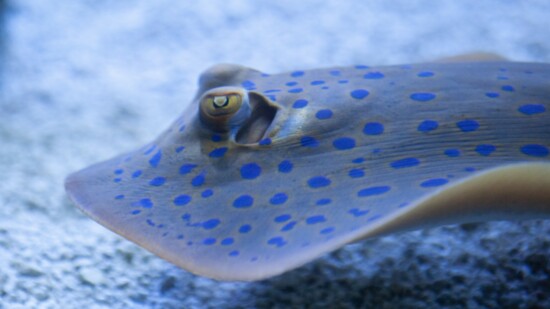“Some people talk to animals. Not many listen though. That’s the problem,” wrote Winnie-the-Pooh author A. A. Milne.
Welcome to the Dallas World Aquarium, the perfect place for such intimate experiences. It is a land far away, yet right under our noses, located downtown in the city’s Historic West End District.
Since opening in 1992, it is a place to observe rarities of earth, water, and sky—from Saffron toucanets and Hawk-headed parrots (in one of the largest avian collections in the world) to wondrous sea creatures (such as river stingrays and sharks) as well as a variety of colorful reptiles, curious primates and more. Exotic wildlife few would ever see are all housed in natural habitats researched and constructed especially for each species.
Since 1997, the facility has been accredited by the Association of Zoos and Aquariums and has been a member of the World Association of Zoos and Aquariums for 23 years. This year, the Dallas World Aquarium, which occupies about two city blocks, will welcome more than 900,0000 visitors.
But it didn’t all happen overnight.
Intrepid Dallas adventurer Daryl Richardson is the soup-to-nuts driving force behind this jungle in the heart of North Texas. Housed in what was once an old warehouse at 1801 North Griffin Street, the building itself has a unique history. It was built in 1924 and was occupied until 1982 by a number of thriving industrial businesses including the Mohawk Rubber Company and Pioneer Steel Rule and Die.
The interior of the building that now houses the Dallas World Aquarium was completely demolished, with only the brick walls and support structure standing. And Richardson’s footprint was expanded further when an adjacent old warehouse was purchased in 1996.
Thousands of enthusiastic visitors began flowing through the building.
“It is our goal for guests to feel they are immersed in the rainforest of South America, with exotic animals at every turn,” Richardson says. “Guests meander the paths to look and listen at the sights and sounds of the arboreal, terrestrial, and aquatic specimens.”
Historically, there have been educational programs available for children, and cameras embedded for behind-the-scenes peeks into environments. “With COVID finally diminishing, we are looking to incorporate scheduled feedings back into daily routines for the visiting public,” Richardson adds.
The Dallas World Aquarium also supports international conservation and education efforts by housing many species that are threatened or even endangered, which is part of a cooperative breeding program with other zoos around the world.
“Our facility is entirely indoors, and climate controlled, except for our South African Penguin exhibit. The pinnacle entrance is a three-story rainforest with our Cloud Forest Trek, which winds down, with multiple exhibits, including Giant Anteaters, River Otters, Orinoco Crocodiles, Antillean Manatee, and extensive saltwater fish displays,” Richardson says. “Then guests are channeled to a walk under our Mundo Maya shark exhibit, highlighted as your path continues with ocelot, flamingo, and pelican exhibits to complete your experience.”
Today, it ranks among the city’s most significant attractions for tourists and locals alike.
“It is our goal for guests to feel they are immersed in the rainforest of South America, with exotic animals at every turn,” Richardson says.



















